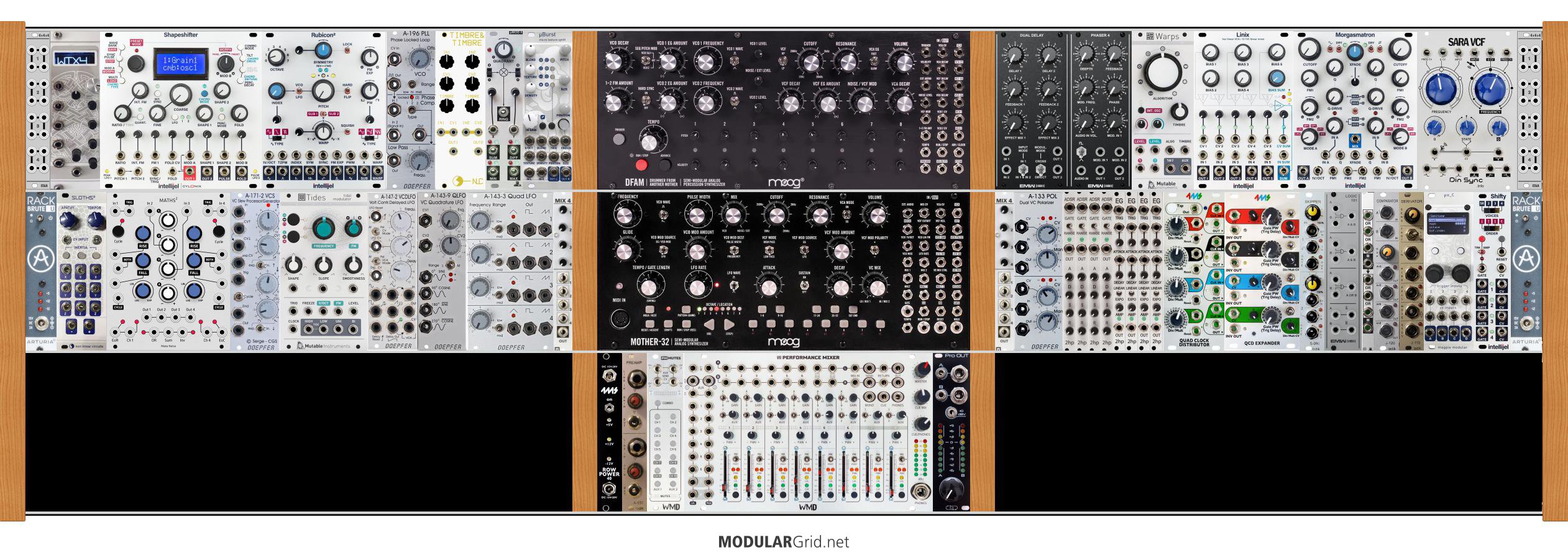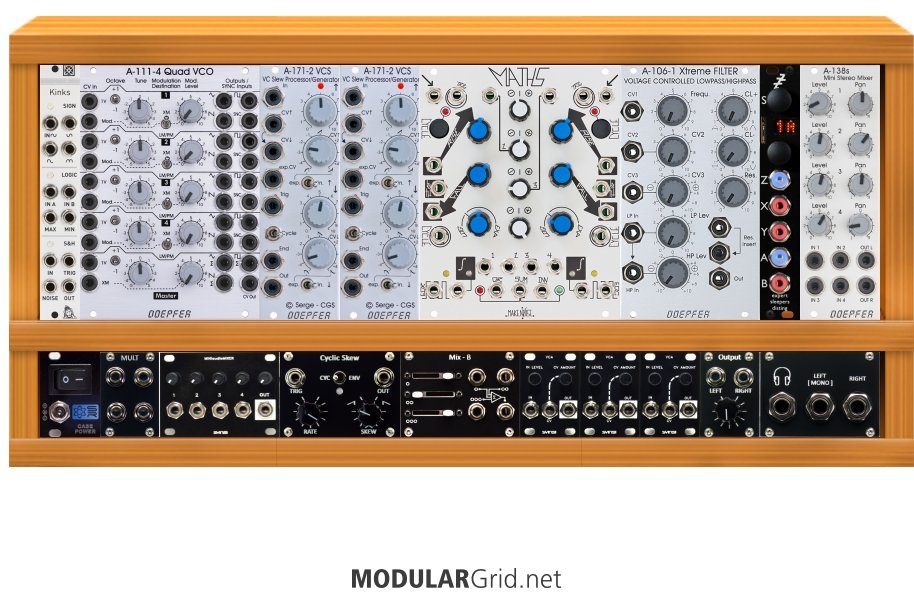Eurorack can be a daunting thing, true. If it weren't for MG, however, it would be a LOT worse. I can remember quite a few years back, working all of this crap out on quadrille paper, and even though at the time there were a lot less choices, it was brain-scrambling to sort out even a basic layout. MG's ability to sort by primary categories simplifies a lot; in fact, that one feature makes coming up with proper apportionments of necessary modules a snap! Plus, it keeps you thinking along the lines of 'ok, now I need x, y, & z devices' while you're working a few steps back from those stages where x, y, & z would come into play.
Looking at tried-and-true designs definitely helps prior to using MG, too. There are a lot of modular and patchable synths that have been made over the years, and while some designs don't work as well as they could, others are timeless and their design is part of the reason why they command the prices they do these days. Instruments like the ARP 2600, Moog IIIc, Korg MS-series, EML 101 and 200, Aries III, EMS VCS3 etc all possess qualities to their layout and signal flow that make them instruments, as opposed to designs that are more confusional and specialized. True, some of those command huge prices today too, but given the choice between a Steiner-Parker Synthacon and an ARP 2600, I'll take the latter...and DID, since that was a trade I made a couple of decades back. The Synthacon may be rarer, sure, but the ARP is just as sonically capable AND, as someone pointed out in Mark Vail's book, it's 'the only synth I can program while drunk'.
I tend to stick with a rule of thumb that goes: 'up-left; down-right'. Control signals go upward on the left side, through the section of modulation sources. They then get to the top rows where the audio generation happens, then flow back down through the right side through waveshaping, filtering, processors, and to the final mixer at the bottom right. This places the waveshaping and filtering contiguous to the modulation sources, processors are close at hand to the mixing, and to the left of this are the initial control signal manipulators for CVs, clocks, and so on. Stick a controller of your preferred flavor in front of the bottom row, and you're good to go! And this has the added plus of letting you see how each subsection is filling out and what preferable interactions you can have as each section fills up. About the only recent time I've violated this, in fact, is in the 'DAMN YOU, ARTURIA!' rack (see the forum under 'racks') where the primary 'heavy lifting' is done with a pair of Arturia Minibrute 2s and a pair of Moogs (Mother32 and DFAM) and this necessitated a strategy where the flow goes toward the center-bottom where the main mixer is located, allowing me to take advantage of the gaps between the Minibrute 2s and the Rackbrute cabs for cable routing. But even there, you still see a gathering of functions into 'blocks' so that there's a particular cohesiveness to the signal flow pattern.
So, really it only looks like rocket science. Kinda-sorta. Eventually, it gets pretty easy. Just takes practice and experience, and some judicious research and an eye for finding those atypical bits in modules that open possibilities up in interesting and unexpected directions. Take the Doepfer A-132-4. This is the most dishwater-dull-looking module, really. But when you look at the raw power hidden under that snoozefest of a panel, all sorts of ideas should be popping into your head. It's four exponential VCAs. Or it's a 4-1 audio mixer. Or you can screw around with the jumpers in the back and have a couple of free-floating VCAs and a 2-channel audio combiner. Use CV1 for level and CV2 for signal vibrato. And so on. Not bad for a boring-looking thing like that. Plus, it's pretty tiny (6 hp), so you get bang for your space-expenditure buck. These are the sort of things you should keep an eye out for. Even tiny little things can equal big crazy when paired with something else. Going back to the rack I mentioned above, you'll note a quad LFO next to a little Malekko DC-coupled mixer. The LFOs alone aren't quite so capable, since they have no CVs nor an onboard mix output. But by adding that little 3hp mixer, I can combine the outputs and then manually 'play' all sorts of variations in LFO curves which can then be fed...well, who knows where? At that point, the quad LFO and mixer stop being what they are alone and become something of a 'variable manual modulation controller' as a combination, hence why they're near the middle where the core of Moogs and the WMD Performance Mixer are. And while each on their own is sort of meh, combining them skyrockets their 'abuse potential'.
Again, it takes a while of exploring and practice to get to a point where ideas like this come naturally as you're doing a layout, but it's achievable with time and practice and, as noted, some research. You'll get there...





